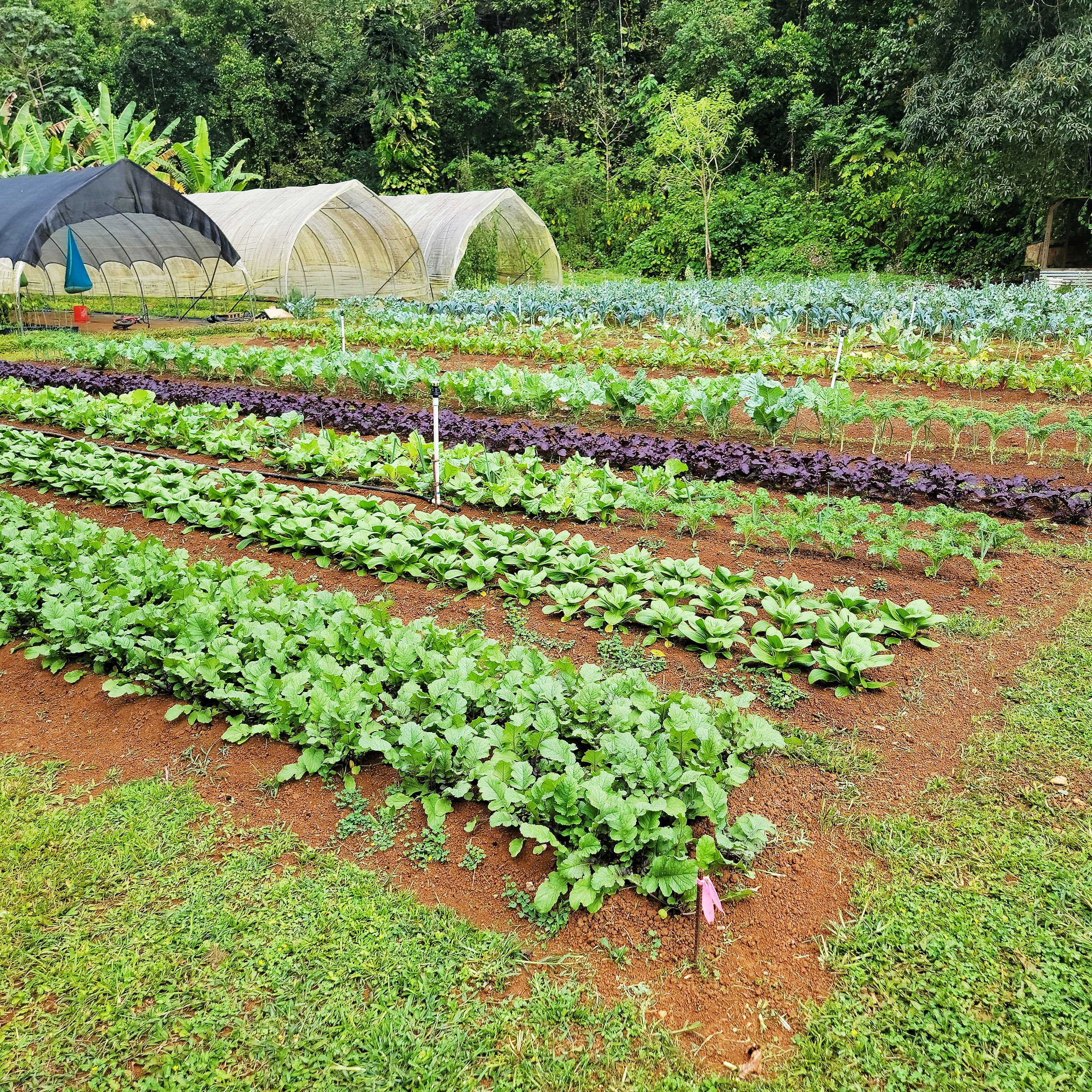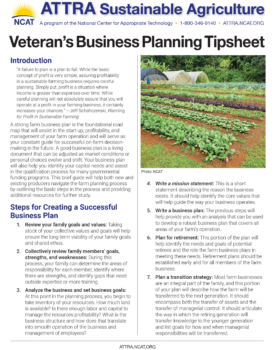Veteran’s Business Planning Tipsheet

By Lee Rinehart and Mike Lewis, NCAT Agriculture Specialists
Introduction
“A failure to plan is a plan to fail. While the basic concept of profit is very simple, assuring profitability in a sustainable farming business requires careful planning. Simply put, profit is a situation where income is greater than expenses over time. While careful planning will not absolutely assure that you will operate at a profit in your farming business, it certainly increases your chances.” —Jeff Schahczenski, Planning for Profit in Sustainable Farming
A strong farm business plan is the foundational road map that will assist in the start-up, profitability, and management of your farm operation and will serve as your constant guide for successful on-farm decision-making in the future. A good business plan is a living document that can be adjusted as market conditions or personal choices evolve and shift. Your business plan will also help you identify your capital needs and assist in the qualification process for many governmental funding programs. This brief guide will help both new and existing producers navigate the farm planning process by outlining the basic steps in the process and providing additional resources for further study.
Steps for Creating a Successful Business Plan
- Review your family goals and values: Taking stock of your collective values and goals will help ensure the long-term viability of your family goals and shared ethos.
- Collectively review family members’ goals, strengths, and weaknesses: During this process, your family can determine the areas of responsibility for each member, identify where there are strengths, and identify gaps that need outside expertise or more training.
- Analyze the business and set business goals: At this point in the planning process, you begin to take inventory of your resources. How much land is available? Is there enough labor and capital to manage the resources profitability? What is the business structure and how does that translate into smooth operation of the business and management of employees?
- Write a mission statement: This is a short statement describing the reason the business exists. It should help identify the core values that will help guide the way your business operates.
- Write a business plan: The previous steps will help provide you with an analysis that can be used to develop a robust business plan that covers all areas of your farm’s operation.
- Plan for retirement: This portion of the plan will help identify the needs and goals of potential retirees and the role the farm business plays in meeting these needs. Retirement plans should be established early and for all members of the farm business.
- Plan a transition strategy: Most farm businesses are an integral part of the family, and this portion of your plan will describe how the farm will be transferred to the next generation. It should encompass both the transfer of assets and the transfer of managerial control. It should articulate the way in which the retiring generation will transfer knowledge to the younger generation and list goals for how and when managerial responsibilities will be transferred.
- Create an estate plan: An estate plan will detail how your farm’s assets will be distributed upon the death of the principal owners.
- Outline an investment plan: Investments can vary from farm to farm, but they are typically comprised of land, machinery, and livestock. Some farms may also have non-farm investments. Determine how these investments may affect your farm planning and future financial needs.
- Set goals in all areas: Setting goals helps to establish a sound plan of action for each area of your farm enterprise. These should be measurable goals for the short, mid, and long terms. Once these goals are set, you’ll be able to review them as needed to keep them in focus and to help shape future decisions.
- Plan for the unexpected: In any farm enterprise, the unexpected will happen, and it is helpful to create contingency plans around crop failures, reduced yields, diseases, etc. While the future is unknown, understanding the potential failures ahead of time can help a producer adapt quickly.
Additional Farm Planning Resources
How to Start a Farm: Beginning Farmers and Ranchers, USDA
Beginning Farmer Tutorials, ATTRA
Getting Started in Farming: An Introduction to Farm Business Planning, National Center for Appropriate Technology
Evaluating a Farming Enterprise, ATTRA
Business Plans, Cornell Small Farms Program
Building a Sustainable Business, Sustainable Agriculture Research and Education (SARE)
Core Values, University of Wisconsin-Madison
Additional Financing Resources
Loans, USDA
Farm Loan Programs, USDA Farm Service Agency
Financing a Farm Operation, Cornell Small Farms Program
Veteran’s Business Planning Tipsheet
By Lee Rinehart and Mike Lewis, NCAT Agriculture Specialists
Published April 2023 ©NCAT
IP643 • Slot 682
This publication is produced by the National Center for Appropriate Technology through the ATTRA Sustainable Agriculture program, under a cooperative agreement with USDA Rural Development. ATTRA.NCAT.ORG. This publication was also made possible in part by funding from the USDA’s National Institute of Food and Agriculture, Farm and Ranch Stress Assistance Network (FRSAN), projects 2019-70028-30464 and 2020-70028-32729.


